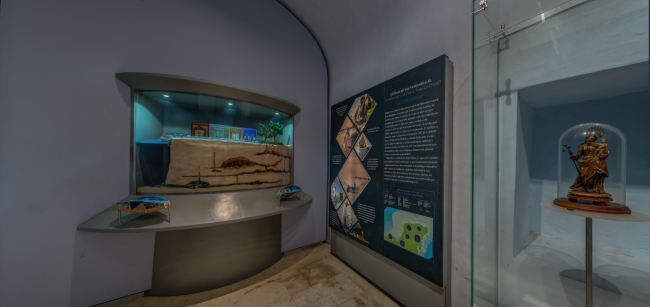
Introduction to Underwater Archaeology
Sala
This room explains what Underwater Archaeology is, as a discipline dedicated to investigating ancient societies through the collection of data and specialized studies of objects, human remains, or animal remains submerged in seas, rivers, lakes, lagoons, springs, swamps, marshes, streams, cenotes, flooded caves, semi-flooded caves, lakes, and land reclaimed from the sea. It also shows in a didactic way how underwater cultural heritage is located, protected, studied, and conserved, highlighting the importance of interdisciplinary work, the application of technology, and the involvement of fishermen.
Underwater archaeology requires the collaboration of teams that include various specialists such as underwater archaeologists, historians, physical anthropologists, social anthropologists, restorers, biologists, paleontologists, paleobotanists, paleoanthropologists, oceanographers, hydrographers, geographers, geologists, architects, engineers specializing in archaeological materials, chemists, surveyors, photographers, or videographers. It also requires the participation of fishing communities, ejidatarios, recreational divers, speleologists, and cave divers who support exploration to discover underwater and semi-submerged archaeological sites.


